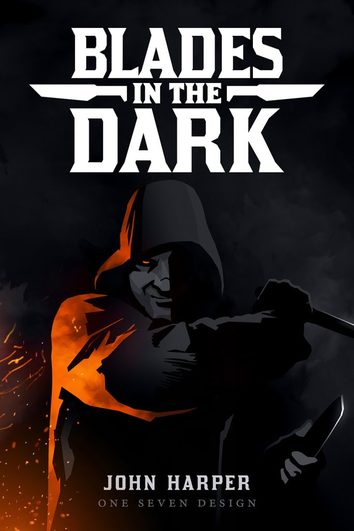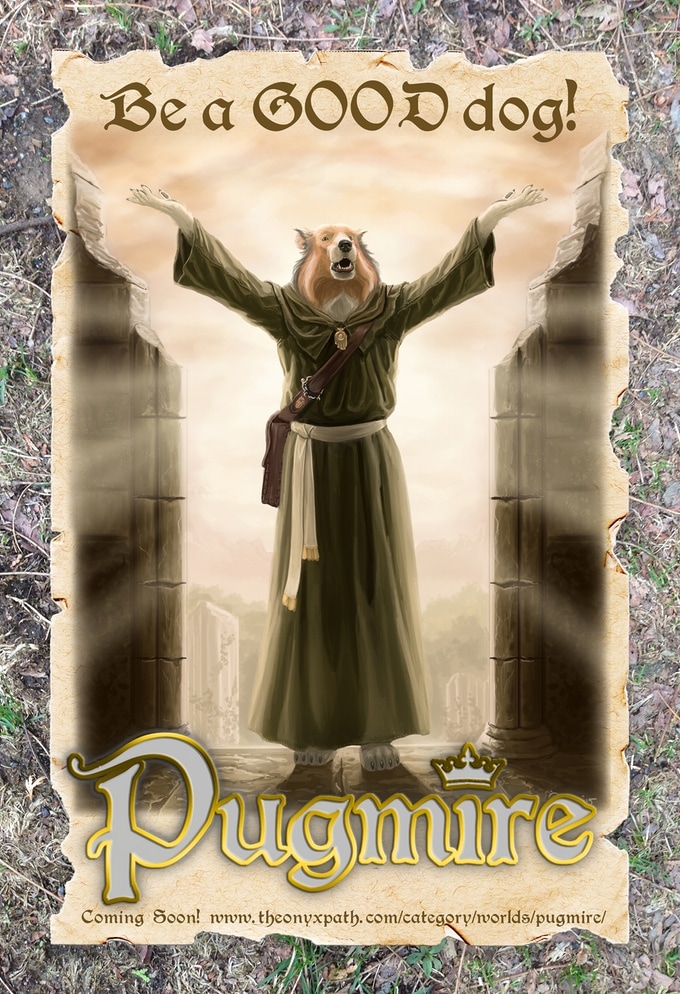 It’s not often that I come across a game that breaks the mold. Sure, some systems will improve or change up the formula significantly enough to make a splash. Blades in the Dark, a game of heists in a broken world, delivers a wholly different tabletop experience. This alone makes it worthy of note, but the smooth execution of this new system makes it worthy of praise. As I am a grognard whose style doesn’t shift much from game to game, system to system, I struggled somewhat with adapting to Blades’ unique style. I hope to elucidate these key differences for those who may be in a similar situation, as the game is too good to pass up. 1) Setting Expectations In Blades, players roll a number of d6s equal to their skill, plus some additional dice depending on circumstance. Like most games, the GM describes the difficulty of the task. Unlike most games, this difficulty does not dictate a number of successes or target number to achieve. Instead, the GM sets the consequences and the effect of the action should it succeed, and players roll and take the highest die result. For instance, a player may describe how they want their character to bull rush a thug who has a gun trained on them. In most situations, the GM would judge this action Desperate (the most dangerous rating) since it is unlikely they will emerge unscathed. Additionally, the GM would rule this as a low level of effect. The player character isn’t likely to incapacitate the thug with a single charge. However, should the thug be standing on a ledge or near a wrought iron grate, their capacity for injury increases, and so does the effect level. The narrative circumstances directly affect the mechanics of the game in this way. The player then rolls, and should the highest die result be a 1-3, they fail with consequences (they are shot and unable to connect with the thug). If it’s 4 or 5, they succeed with consequences (they slam into the thug, but also take a bullet for their trouble), and if it’s a 6, they succeed without negative consequences (the PC hits the thug before they can get a shot off). It’s up to the GM to keep their players informed about the aspects of a scene so that everyone’s expectations are the same. What if the PC had a gun too? What if that PC decided to talk down the thug instead? The GM applies a rating entirely dependant on these shifting circumstances, which makes the next point all the more important. 2) Gathering Input This game, more so than most others, relies on a give and take by the GM and players. For instance, the players choose which skill they want to use to complete any given task. The GM is encouraged not to deny the player’s selection, rather to ask the player to describe how they want to use that skill to accomplish that objective. In the previous example, the PC could use their Skirmish skill (most often used for scuffles), and the GM would most likely rule as described. Should they instead ask to use Prowl, they would have to describe how that skill applies to the situation. Do they try to duck behind cover, skulk through the shadows, then clobber the thug once their unaware? It’s up to the player, but the goal remains always to serve the narrative. The GM is also intended to take input from players on how they want the consequences to apply to them. Physical harm and negative outcomes can be resisted by the player, but doing so causes Stress to accumulate and puts the player closer to a permanent Trauma. Sure, you didn’t get shot, but it means you had to throw yourself behind cover at the last second, and the near miss left you rattled. The GM is the final arbiter on how the consequence is avoided, or if it’s merely reduced in strength, so the power does lie ultimately with the GM. This keeps the gaming table in check while also making players feel more involved in the storytelling process. 3) Narrating Time Time is a funny construct in Blades. Things are not always done entirely chronologically, and there can be significant gaps without any actual gameplay problems. Showcased here is the flashbacks system. Before a job, your gang of (mostly) competent criminals meets under the lantern’s glow to plan out the fine details. The players, however, do not. Instead, they take preparatory actions, such as scouting the base or researching the target, decide on a style of heist, then determine the point of entry. The game then cuts immediately to the action. Any and all remaining details are filled in by the gang declaring flashbacks in the middle of the heist. “I planted a gun under the seat during prep,” is a tried and true one. “I brought flowers for the girl we have on the inside to convince her to help us.” These are all actions that players can take during a heist that affect the past yet aid the PCs in the moment. Depending on how wild and unlikely a flashback is, it might require some Stress on the part of the character. Still, this mechanic provides a dynamic way to skip the endless debate about each minute detail of a job beforehand and get right to the fun. It’s also the hardest thing for GMs and players to get used to. Once you get the hang of it, though, you may want to import the system into every other similar game you play. Blades in the Dark is a fantastic game with a really detailed setting, but it’s so much more than that. It truly innovates in a major way and provides a new, and in some ways better, way to run TTRPGs. It’s just we grogs who need the occasional kick in the pants to keep our minds open so we don’t miss these gems when they come around. David Horwitz is a gamer and freelance writer/editor with an obsession for exploring new forms of leisure. If you’re looking for an inquisitive mind and a deft hand, or just want to chat about gaming, contact him at www.davidhorwitzwrites.com/contact. Picture Reference: https://www.evilhat.com/home/blades-in-the-dark/  With 2016 now firmly lodged in the past, we turn our attention to a new year, full of new hopes and new joys to discover. To that end, I’ve compiled a list of a few games that I’m looking forward to, so that I may share some of that excitement with you. These games are in no particular order, and I cannot guarantee that the final products will be any good. Nevertheless, these games and new editions of old games are certainly worth a look and perhaps a bit of your attention as we move into 2017. 1 . Pugmire This one’s going to be a blast. We’ve all been waiting for a great game about anthropomorphic dogs defending king and country in a fantasy setting, even if we didn’t know it. Luckily, the wait is nearly over. The good folks at Onyx Path Publishing (creators of the newest Exalted edition, Chronicles of Darkness etc.) bring to us a world after humanity, wherein the noble dogs of Pugmire follow the Code of Man, striving to “Be a Good Dog” and “Fetch What Has Been Left Behind,” among other tenants. I’m particularly excited to see how the enemies of Pugmire, the Cats of the Monarchies of Mau, are fleshed out, especially considering my propensity for GMing conniving villains (and my love of cats, of course). What’s more, Onyx Path is using a variant on the open d20 system and is striving to get the game onto store shelves. The game will therefore be extremely accessible, in both senses of the word, to new and veteran gamers. 2 . Monsterhearts 2 A new edition of a lesser-known RPG about teen monsters, Monsterhearts 2 stands to improve upon a game that breaks the mold for traditional games in both tone and mechanics. Here, players will put on different “skins” of creepy horror tropes, each trying to make it in high school without being slain by the popular kids. The new edition promises revisions to some of the skins, new skins co-developed by particularly affluent Kickstarter backers, and a bevy of art and writing updates. If you think like I do, and you wish to relive your “gory days” in high school (commence the eye rolling), or get back at the cool kids who spurned you, then you owe it to yourself to check out this interesting and now updated table-top experience. 3 . Cthulhutech V2 Anyone who’s familiar with the original version of this Anime/Cthulhu mishmash may be surprised to see it on this list. The original game is somewhat renowned for its mishandling of certain sensitive subjects, its clunky dice system, and its bizarrely strict canon. However, many also know it to be a game with wonderful artwork, fun and detailed combat, and intriguing character designs. With the development of a second edition, gamers such as myself are hopeful that the previously mentioned issues will be fixed, while retaining the spirit and art that in which we saw so much potential. An open beta exists on DriveThruRPG, so if you’d like to see a better Cthulhutech this year, check it out and leave them your thoughts! 4 . Mekton Zero Perhaps you’ve never heard of Mekton but you’re a big fan of Cyberpunk 2020. Maybe you just like giant robots beating the crap out of each other. Or, just maybe, you’re a big fan and veteran of Mekton or its descendant, Mekton Zeta, like I am. Whatever the case, the newest version of Mekton is worth a look. It’s been in development for years, and the creators at R. Talsorian games have been working hard, whilst co-developing Cyberpunk 2077, to deliver a giant anime robot table-top game for the ages. The Mekton series is known for its customizability. You want to build your favorite Gundam, or something you saw in Pacific Rim? Maybe you’ve got your own awesome design you want to try out. Mekton has a comprehensive mech-building system that allows you to create any robot you can imagine. The newest version promises a revamped setting and polished rules, and should be a breakout hit as soon as it releases. Keep your eye on this one. 5 . Blades in the Dark Set in a dark, mysterious city of old industry, this title has players create characters that work together as a crew, with the GM fleshing out the group with other gang members. Your crew will thieve, assassinate, and discover hidden truths on the shadowy streets of Duskwall. The creator, John Harper, describes the game as a mix of games like Dishonored and Thief, along with novels such as Lies of Locke Lamora. It therefore promises to be a fast paced, industrial-steampunk game of dirty deeds and dark revelation. As a counterpoint to the first game in this list, this seems like it will be a far grittier experience, yet one worth digging your fingernails into. These are only a few examples of the new and revised titles that we can expect to see in the coming year, and there are many I didn’t list that I’m certain you’re excited about. Share them with us! Leave a comment or contact me at my website listed below. Let’s have a great year in 2017, and happy gaming to you and your merry band of players. David Horwitz is a gamer and freelance writer with an obsession for exploring new forms of leisure. If you’re looking for an inquisitive mind and a deft hand, or just want to chat about gaming, contact him at www.davidhorwitzwrites.com/contact . He’s looking forward to GMing Pugmire and bringing the might of the Cats of Mau down upon the party of unsuspecting do-gooding doggos. |
All blog materials created and developed by the staff here at High Level Games Archives
April 2023
Categories
All
|
Proudly powered by Weebly

 RSS Feed
RSS Feed